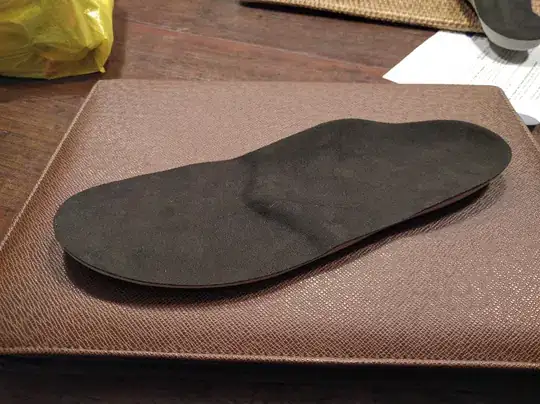I would like to obtain a 3D model of my insoles. I tried to scan it with 123D catch but finding reference points is difficult because the insole is black.
How could I improve the scanning? I attach a photo of the insole to show its not easy shape.
I thought about placing a grid of white spots on the surface, but will it be enough?
Also, is it recommended to keep the camera still and rotate the object (I have a rotating stand) or should I move the camera? in the second case, the accuracy of the photos will be lower, while rotating 5-10 degrees the stand every time is extremely easy.
As background should I use a checkerboard or something else not repetitive?
I noticed that the insole has basically three different "levels", joined smoothly with each other. These "planes" are sloped the same way, so that if I change the pitch of the insole by about 10 degrees, they will be horizontal. Would it improve the accuracy?
Edit: the insole is perfectly new, newer worn before.
Update
I dotted the insole with white paint (the white eraser paint used in office and school) and I took a series of photos with the insole in top of a tripod, laying on a flat white cardboard support. 55 photos in total at 3 different elevations (side, medium, high). I also did a test with fixed camera and rotating object.
Photoscan did not work well in general. Keeping the object fixed produces the best results, but poor.
123D Catch did a much better job! again with fixed object and moving camera. Still, treating the resulting mesh was difficult and the accuracy could be improved.
Autodesk Remake 2017 worked VERY well, as you can see in the attached screenshot, and it allows the editing of the mesh to remove useless parts of the model. I haven't tried yet to process the photos with the camera fixed and the rotating object. I did the processing locally (it's slow!) with maximum details and resolution.

